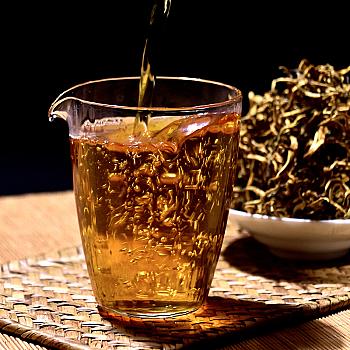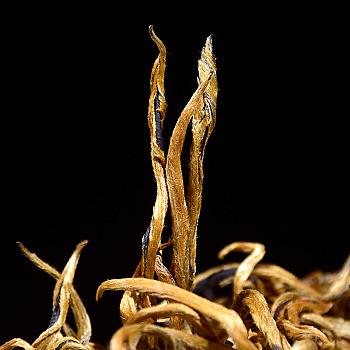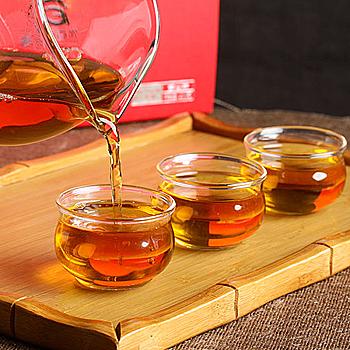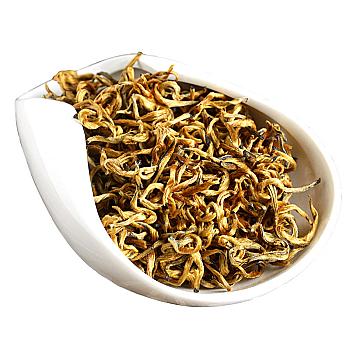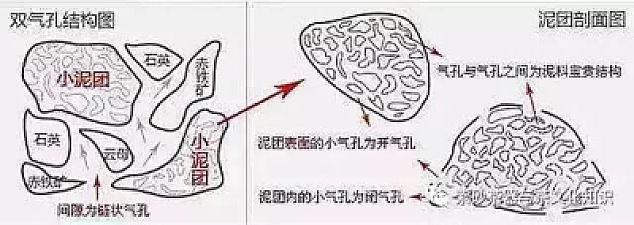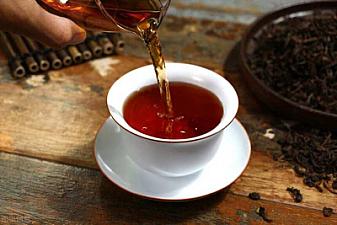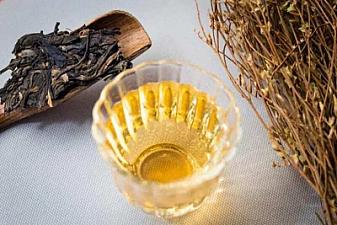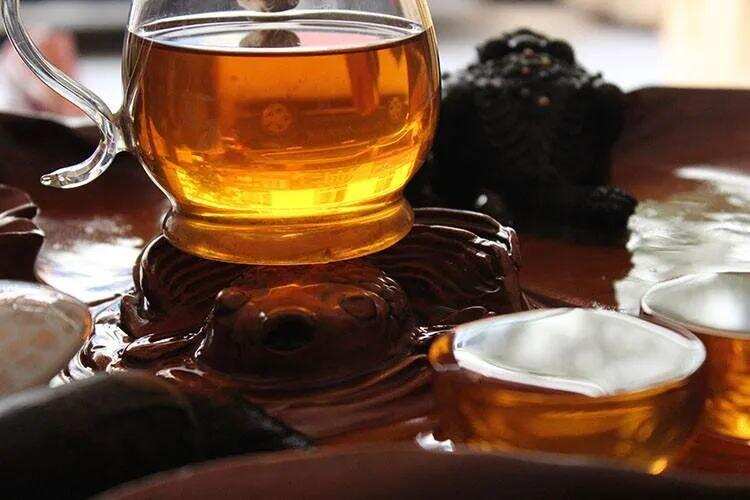
Talking about Puer tea's "heaping flavors"
August 15, 2025
When we are drinking pu-erh tea, we often hear the term "mud flavor" (dīwèi). So what exactly is this mud flavor? How does it form? In fact, many people who have recently started to drink pu-erh tea dislike this mud flavor and it becomes a barrier for popularizing pu-erh among the general public. Many people do not understand mud flavor and even confuse it with moldiness.

When we drink strong tea, we often hear a term called "dui wei", but what is this "dwi" taste and how does it form?
In fact, many tea insects who have just been in touch with Pu-erh aged tea are disgusted by the aroma of heap. This also became a barrier to popularize the aged tea for the masses, many people do not understand the aroma of heap, even mix it up with the smell of mold.
Some say that Pu'er tea must have a thick and mellow flavor to be considered normal, some people say that without the thick and mellow smell means fermentation is not yet done, and some say that the thick and mellow smell is actually the aroma of Pu'er tea.
Actually, the smell of a wine is the normal breath produced during fermentation, but its size has a lot to do with the method and storage.
The more professional and mature the fermentation technology is, the smaller the heap taste will be.
The so-called "heap taste" is from the description of "fermented moldy heap", namely to describe a kind of similar mixture of acid, sour, rotten, stinky etc. bad fermentation smell.

The flavor of tea heap is usually widely present in the new tea after brewing because the traditional tea fermentation process of the tea heap is a long and complex change process. Tons to dozens of tons of tea leaves are fermented together, which cannot be absolutely uniform. Therefore, some inferior odors will be produced from teas that have been over-fermented and under-fermented, and how to reduce these inferior odors to the lowest level at the time of processing is a test for processing technology.

By using a quick fermentation method where water is sprinkled on the tea leaves, and by heating and humidifying them to encourage microbial activity, the internal substances in the tea can be reduced, resulting in a mellow and smooth flavor, greatly reducing bitterness.
Throughout the process, the temperature in the heap will reach 60 to 65 degrees Celsius. This results in what is called "hot fermentation" new tea products having a distinct 'heap' taste, which is believed to be a flavor that microbes develop during the fermentation process.

Generally, such an unpleasant taste is more obvious in a tea that is insufficiently fermented. Of course, the term "insufficient fermentation" should include both insufficient water and insufficient time for fermentation. This is similar to some teas deliberately fermented lightly but emphasizes time more so than others.

If there is no serious fermentation defect or over, the unpleasant odour can be naturally decomposed and emitted to reveal mellow wine age flavour through reasonable storage of varying durations.
The problem of how to make newly made Pu tea taste milder while maintaining long-term storage value is a difficult one, as fully fermented teas (more than 8.5%) have lighter flavors but less nutrient retention, and the leaves are often severely hardened with little preservative value.

So controlling fermentation is a way to reduce the heap taste, but it's not the only method. Many factories have their own way of reducing the heap taste, and currently used are "mixing old materials" and "caring for the warehouse" methods.
Currently popular in the market are fermented Pu-erh, tree-aged fermented Pu-erh, off-the-ground fermented Pu-erh, wooden box fermented Pu-erh, microbial fermentation Pu-erh, etc. These can solve the problem of good flavor of fresh roasted Pu-erh tea, its contribution is actually to solve the issue of strong and heavy puer flavor, but it's worth noting that its aging space and preservation value still needs to be verified by time.
Fermented taste is difficult to avoid during the processing of tea, and can slowly fade away in late aging. Moldy smell, on the other hand, is an improper storage issue that needs attention.

Aroma of old Pu-erh tea has a mysterious and subtle scent which is the proof of time's passage! A good old tea always have its own pure flavor. When you drink it, it can bring comfort; when you smell it, it can delight your mind.
Mold smell: mold is a kind of bad smell that things are rotten and deteriorated, drinking it will feel stimulating, uncomfortable, even have nausea and vomiting!

Aroma: Only newly pilled tea with insufficient years of age will possess aroma. Generally speaking, aroma is also relatively stimulating but can be distinguished from moldy smell in that we can drink the scent from it. The aroma can last 2-3 years and will finally leave only old taste behind. Therefore, at present saying a tea has an aroma can only prove its insufficient year of age.
In terms of technology
1. Improve the uniformity and grading accuracy of fermentation materials, avoid poor odors being absorbed by tea leaves due to the age and grade mixture of materials, or cause phase-specific unpleasant aromatic substances to be produced in the heap due to inconsistent fermentation process.

2. When operating Wǔduī, it is necessary to strictly control the amount of tide, try to maintain the proper moisture content of the heap, and do not make the heap excessively contact with water for a long time, which will cause the tea leaves to be soft and rotten, producing weird flavors.
3. In terms of fermentation maturity, light fermentation should avoid over-light fermentation while heavy fermentation should prevent carbonation, and maintain consistent fermentation. Heavy fermentation must also be reduced through standardized procedures to minimize the time spent in heaps and prevent prolonged fermentation cycles from causing excessive absorption of bad odors by the tea leaves inside the heap.

4. The fermentation room should have good ventilation, the fermentation cloth should be kept breathable as much as possible, and the old fermentation cloth should be replaced frequently. When the pile is dry, long-term low-temperature drying should be carried out.
5. The above jobs can only reduce the musty smell, and cannot reach the purpose of eliminating the musty smell. Later, it can only be achieved by storing, and the air circulation in the storage area must be kept fresh, the storage site is clean and free of odor, and humidity is low. In addition, fermented tea should keep the moisture level at a certain dryness when stored, and prevent mosquitoes and rodents.

Be sure to pay attention when storing.
1. The storage environment of tea leaves should be consistent with the late stage storage of tea factories, keep the air fresh and ventilated, regularly open the packaging to ventilate and remove odors.
2. You can open the package, remove the outer packaging paper and allow fresh circulating air to fully contact it. This is more conducive to the release of fragrances but also requires strict control over related large environmental conditions such as temperature and humidity.

While drinking it, you can also do like this.
1. Before brewing, use a tea knife to break apart the tea cake and allow it to sit for a while, allowing some of the aromas to dissipate.
2. The tea cake is placed above the boiling water overflow, with high steam temperature softening and de-aeration of the tea cake and further removing part of the impurities.

3、High-temperature brewing, boiling water quickly wakes up tea, and part of the water vapor is also brought down to reduce the body flavor.
There is another method. Dry roast the tea cake at high heat to suppress the earthy smell but this method should be used for immediate drinking, as it cannot be stored after roasting.

And next time you encounter any stinky old rice, don't just say "it tastes like moldy flavor"! Be careful to distinguish whether it's the "moldy flavor" or the "stale flavor".
